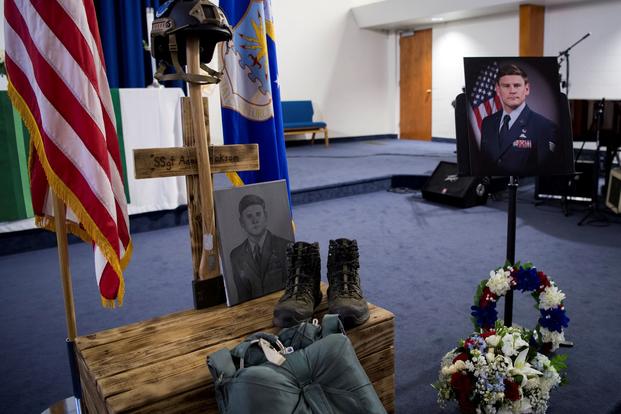An experienced Air Force Survival, Evasion, Resistance and Escape (SERE) specialist practicing a free-fall jump in California last year overcontrolled his parachute canopy, causing it to stall before hitting the ground, according to a new Accident Investigation Board report.
The report, released by Air Force Materiel Command on April 3, also found a high wing load -- or the total amount of mass distributed per square foot of the parachute canopy, which should have been more heavily scrutinized before the jump mission in which Staff Sgt. Adam Erickson died.
Erickson, with the 412th Operations Support Squadron at Edwards Air Force Base, California, and his teammates were conducting routine parachute proficiency training on Sept. 10, 2019, at Skydive Perris, a commercial operation in Perris, California.
The team was jumping out of a de Havilland Canada DHC-6 Twin Otter, a twin-engine, turboprop aircraft popular with commercial skydivers. Weather conditions for the day recorded low clouds, which dissipated before the jump, and light winds, officials said. The crew had had adequate rest before takeoff.
Related: Back-to-Back Midair Malfunctions Caused Navy SEAL Parachutist's Death: Investigation
Erickson was on his second jump of the day, readying for a free fall alongside another jumper, according to the report. The aircraft was on its fourth lift for the jumpers. The Twin Otter climbed to 12,500 feet; Erickson and his teammates dove out of the aircraft at around 11:55 a.m. local time "without incident."
During his second jump, Erickson, with over seven years of SERE experience and more than 350 jumps over the span of his career, was preparing for the free fall with a "1.4:1 wing load," which "made the parachute much more sensitive to his inputs," investigators said. The Air Force describes wing load as "the ratio of the suspended weight of the parachutist and carried equipment in pounds, relative to the size of the parachute canopy in square feet."
At approximately 3,350 feet above the ground, Erickson successfully deployed his chute, fully opening his Sabre 2-170 canopy. On his descent toward the desired location, he turned, heading west; at 340 feet, he turned again, heading south while on his approach to the landing point.
But at 274 feet, Erickson made a full brake in his parachute line, meaning he fully pulled down on the lines that control the canopy. He held onto the brake for approximately 10 seconds, during which "the canopy stalled," the report said. According to military free-fall protocols, airmen "must avoid" a canopy stall below 500 feet.
"There was insufficient altitude at this point to recover to a fully inflated canopy," said Brig. Gen. Paul Knapp, the investigation board's president.
"The canopy then collapsed, pitched forward, and started a left spin," according to the report.
The spin continued for approximately two rotations before Erickson impacted the ground, "sustaining non-survivable blunt force injuries."
Knapp said the overexertion of the canopy contributed to its stall but also noted there should have been more attention given to the jumpers' individual wing loads.
"Though not identified as a substantially contributing factor, I note that squadron supervision was unaware of the elevated risks associated with high wing loading when stepping down to smaller parachute sizes," Knapp said.
"Supervision's inadequate risk assessment enabled an environment of excessive autonomy where operations involving elevated risks, such as high wing loading, did not receive the appropriate level of scrutiny," he said.
"We are deeply saddened by this tragic loss," 412th Test Wing commander Brig. Gen. John Teichert said at the time of the accident. "[Erickson] touched many lives during his time here, and our hearts and prayers go out to his family, friends and co-workers."
Erickson joined the Air Force in November 2011, according to Air Force Times.
-- Oriana Pawlyk can be reached at oriana.pawlyk@military.com. Follow her on Twitter at @Oriana0214.
Read more: 'Nothing Off the Table': Pentagon Won't Rule Out Reinstating Fired Navy Captain













